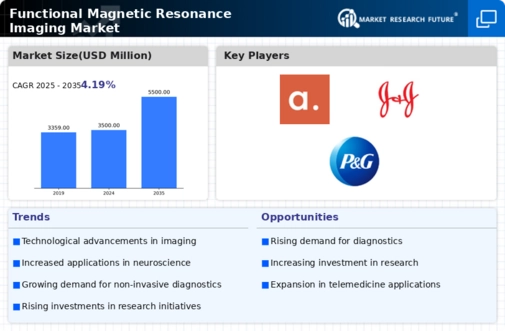Functional Magnetic Resonance Imaging Market Summary
As per Market Research Future Analysis, the Functional Magnetic Resonance Imaging (fMRI) market is projected to grow from significant value in 2023 to significant value by 2032, with a compound annual growth rate (CAGR) of 6.80% during the forecast period (2024 - 2032). The market is driven by the rising adoption of fMRI in drug development and therapeutic monitoring, alongside the increasing prevalence of neurological disorders such as Alzheimer's and Parkinson's disease. Technological innovations in data analysis and interpretation further enhance the clinical utility of fMRI, making it a vital tool in neuroscience research and clinical practice.
Key Market Trends & Highlights
Key trends driving the fMRI market include advancements in technology and increasing demand for diagnostic imaging.
- The Open system segment accounted for 65% of market revenue in 2023 due to its flexibility and compatibility.
- The Low Field Strength category generated the most income in 2023, driven by cost-effectiveness and accessibility.
- The Brain and Neurological application is experiencing the highest CAGR, reflecting the growing demand for fMRI in neurological research.
Market Size & Forecast
| Market Size in 2023 | Significant Value |
| Projected Market Size by 2032 | Significant Value |
| CAGR from 2024 to 2032 | 6.80% |
Major Players
Major players in the market include Siemens Healthineers, GE Healthcare, Philips Healthcare, Canon Medical Systems Corporation, and Hitachi Medical Systems.















Leave a Comment